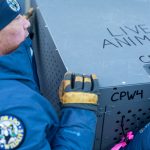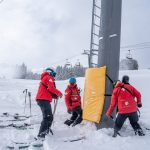Colorado skimo racers are looking to qualify for the upcoming Winter Olympics, helping to drive more youth to the sport
The Summit Skimo Club, Aspen Valley Skimo Club, Steamboat Springs Winter Sports Club and Boulder Youth Skimo Club are among the teams where young athletes are joining the sport
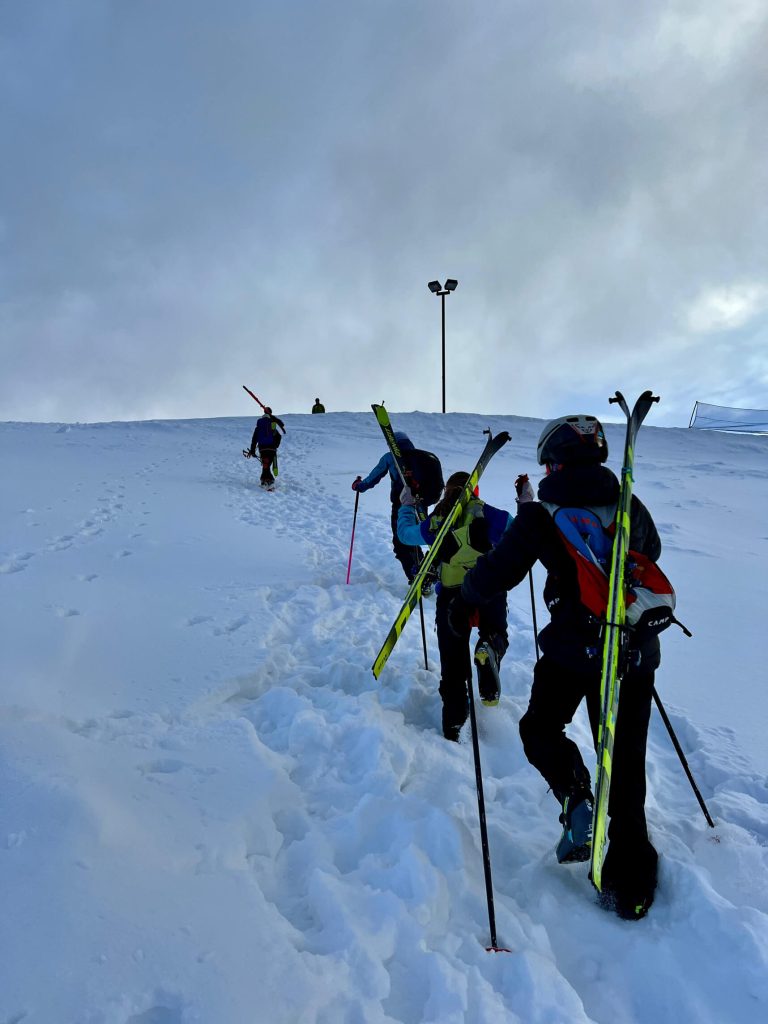
Summit SkiMo Club/Courtesy photo
A roster of Coloradans is among those hoping to compete in ski mountaineering, or skimo, when the sport makes its debut in the 2026 Winter Olympics in Milano Cortina, Italy, in February.
U.S. Ski Mountaineering Association Head of Sport Sarah Cookler said the inclusion of the sport in the Olympics for the first time has helped drive its growth in Colorado and the United States.
“Anytime a sport is included in the Olympics, it sheds a lot of light onto the sport and just brings a lot more visibility and awareness to the sport,” Cookler said. “Certainly, for a sport as new as up and coming in the U.S. as skimo, the inclusion in the Olympics has brought a lot of visibility.”
Skimo is a sport that involves racing uphill and downhill on skis. The International Olympic Committee voted unanimously in 2021 to add the skimo to next year’s Winter Olympics with two race formats: a sprint and a mixed relay.
Team USA is on the cusp of qualifying for the upcoming Olympics. With one quota spot allotted to North America, Cookler said Team USA is sitting one point behind Canada. Whichever country wins the mixed relay event at the International Ski Mountaineering World Cup at Solitude Mountain Resort in Utah in Dec. 6-7 will qualify for the Olympics.
Colorado skimo racers among the Olympic hopefuls include: Cam Smith of Crested Butte, John Gaston of Aspen, Arthur Whitehead of Frisco, Jessie Young of Aspen, Hali Hafeman of Evergreen and Gwen Rudy of Leadville.
“There’s only going to be a debut of this sport in the Olympics one time and we want the U.S. to be a part of that,” Smith said. “We want to show that we’re going to be a force in the sport as it gets put in future Olympic games.”
What is ski mountaineering?
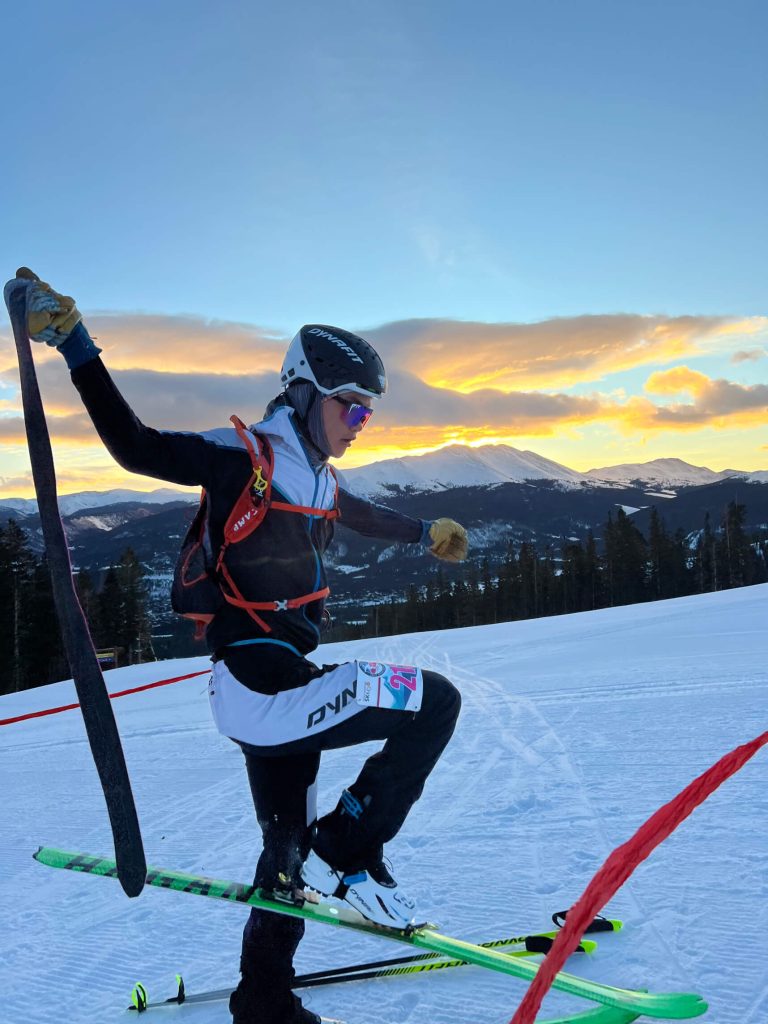
Ski mountaineering dates back to the World War I and World War II era, when military patrols had to travel up and over mountains, particularly in the Alps, Cookler said. In the U.S., the 10th Mountain Division — an elite U.S. Army unit trained for mountain warfare — was among some of the first ski mountaineers.
In the inaugural Winter Olympics in Chamonix, France, in 1924, a sport called “military patrol” had some elements of modern-day skimo racing, except competitors were carrying guns while skiing, similar to the modern-day Olympic biathlon event.
Less scrolling. More knowing.
Sign up for daily or weekly newsletters at SummitDaily.com/newsletter
“So some may say this is almost a rebirth of skimo in the Olympics,” Cookler said, noting that while skimo has been a competitive sport in Europe for decades, it has become increasingly popular in the U.S. since the late 1990s, especially in the past 10 years.
Breckenridge resident Nikki LaRochelle — a former U.S. Skimo team member who will be commentating during the upcoming World Cup and the Olympics — described skimo as a “very dynamic” sport.
Skimo has similarities to backcountry skiing, with athletes using skins to travel uphill as well as bootpacking uphill, before skiing aggressively downhill, LaRochelle said. The equipment used in the sport is extremely lightweight weight with the ski boots weighing about the same as a pair of running shoes and the skis about the same weight as cross-country skis, she said.
At the start of the sprint race, competitors charge a short distance uphill on their skis before removing them as quickly as possible, throwing them into a backpack, and continuing to sprint uphill in their boots. Then, the racers put their skis back on, continue uphill until they reach the top of the course, remove their skis and skins and stash them in a backpack before racing downhill.
The mixed relay — with teams made up of one man and woman — is similar, with each team member racing uphill and back down twice.
“To compete and be competitive in the sport, you have to be unbelievably fit,” LaRochelle said. “Think about sprinting up endless flights of stairs, then bending over, taking your skins off in four seconds. They probably put in hundreds and hundreds of reps into practicing that transition alone.”
Colorado skimo athletes recognize sport’s growth
Whitehead, a U.S. SkiMo Team athlete from Frisco, got involved in the sport about 10 years ago. Like many skimo racers, he is an endurance athlete who competed in trail running and ultramarathons before getting involved in skimo.
“It’s super exciting that it’s been added to the Olympics. It’s really elevating the profile of the sport,” Whitehead said of skimo. “It’s really niche, but in the time I’ve been doing it, I’ve seen it become way more popular.”
While many skimo races are longer and may involve hours of steep mountain traversing, the two disciplines in the upcoming Olympics are shorter. Whitehead said that means competitors need not only to be in shape but also to master the transitions.
“When you’re racing, it’s this balance between skiing as hard as you possibly can but also staying relaxed in your flow state mentally,” he said. “So, when you get to the transition, you can move on to that next mode of travel without wasting any time there.”
Smith, who also got into skimo about a decade ago, said he was one of the only college-age competitors at that time, but over the years, he’s seen the sport grow more professionalized with much more youth involvement.
“When I started, I was in college and I was the only high school or college-age athlete,” Smith said. “At all these events, I would always stand up on the (under 23 age group) podium by myself.”
Now, the U.S. has youth ski programs across the country, including teams in Colorado, he said.
“We’ve been getting our teeth kicked in by Europe like 99% of the time,” Smith said. “Now that we’re getting these talented athletes involved with skimo right away, we’re putting up more of a fight.”
Colorado skimo programs take off
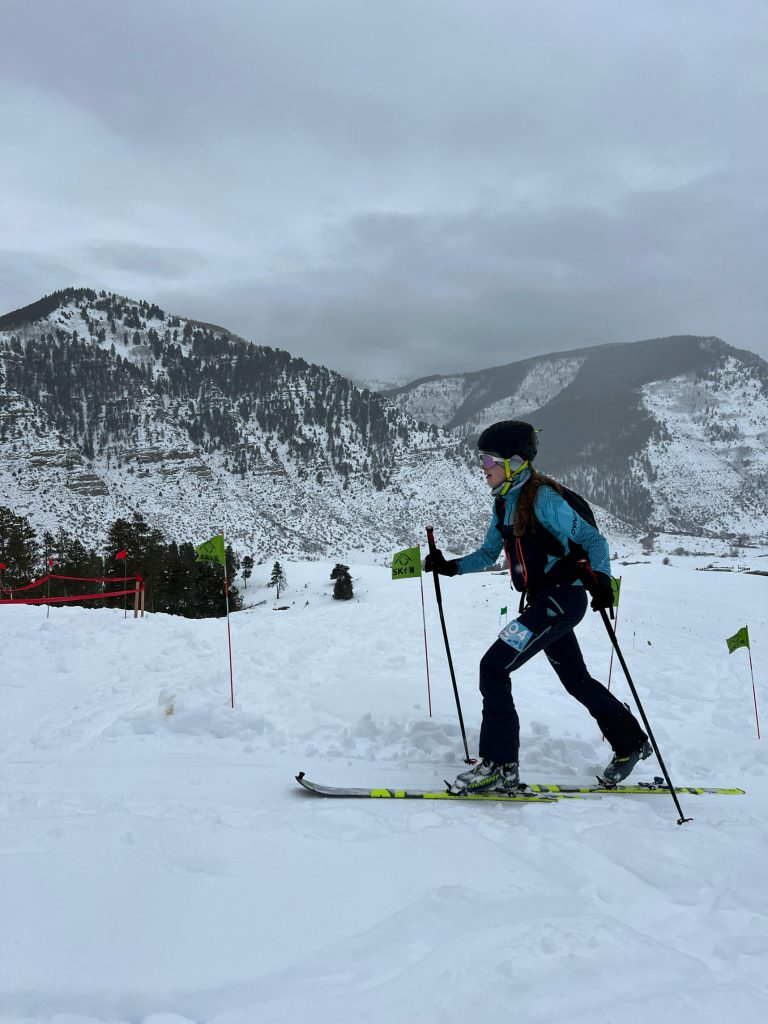
Across Colorado, skimo has taken off as a sport with more opportunities for young athletes to get involved and more races being scheduled across the mountains.
Frisco resident Mark Koob, a former middle school teacher, founded the Rocky Mountain Skimo Association — which helps put on skimo races across Colorado — about four years ago as he recognized a need for a more organized, professional sports league.
“I heard it was going to be in the Olympics and thought that it would be a good time to quit teaching and start this race directing company,” Koob said.
This year, Rocky Mountain Skimo is hosting more than a dozen skimo races, including in Frisco, Wolf Creek, Breckenridge and Winter Park.
In Summit County, Summit Skimo Club coach Eric Broecker said that, while the club has been around since about 2011, he has deliberately worked to get more youth involved in the sport over the past five years.
“When we first pivoted to a youth program, we weren’t sure what we were going to get. There are so many choices — downhill, big mountain, nordic skiing, hockey. These kids have so many choices,” Broecker said. “We’re like ‘Who wants to skimo? Who wants to hike up a hill and ski down?’ Apparently, 40 kids do.”
The Aspen Valley Skimo Club, Steamboat Springs Winter Sports Club and Boulder Youth Skimo Club also offer skimo opportunities for young Coloradans.
On the Front Range, Boulder resident Davide Giardini — who grew up just outside of Milano Cortina, Italy, and plans to return for the Olympics — founded the Boulder Skimo Club in 2021 to help connect with others interested in the sport amid the COVID-19 pandemic. The club has since grown to over 100 members.
Last year, Giardini started a youth team with about 10 members that practices at Eldora. He said that in a “sports-crazed town like Boulder,” he believes skimo will take off and Colorado could become known for producing athletes that compete at the “top echelon” of the sport, like the Olympics.
While Cookler said that she is hopeful that the U.S. will qualify for skimo in the upcoming Olympics, she said even if it doesn’t, the sport is growing throughout the country so it is likely there will be U.S. athletes competing in future Olympics.
“If we get athletes to the Olympics, that’s the icing on the cake,” Cookler said, “but the future for our national organization looks really strong and it looks promising for the sport to be included in the Olympics in 2030 and hopefully 2034, in which case the development of skimo in the U.S. will only continue to grow.”

Support Local Journalism

Support Local Journalism
As a Summit Daily News reader, you make our work possible.
Summit Daily is embarking on a multiyear project to digitize its archives going back to 1989 and make them available to the public in partnership with the Colorado Historic Newspapers Collection. The full project is expected to cost about $165,000. All donations made in 2023 will go directly toward this project.
Every contribution, no matter the size, will make a difference.




